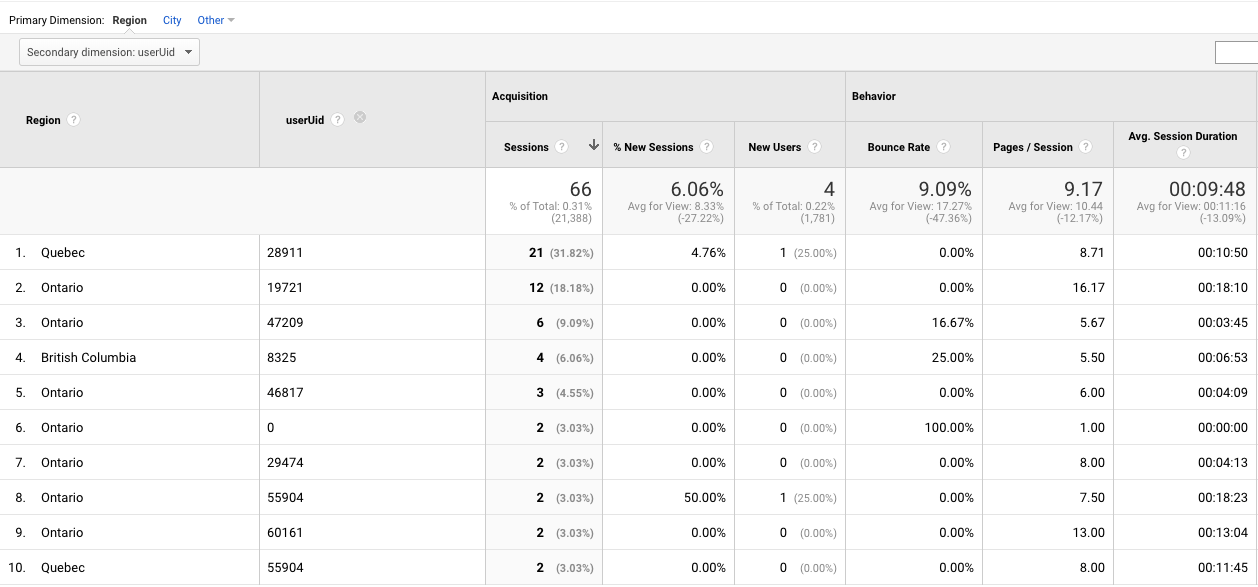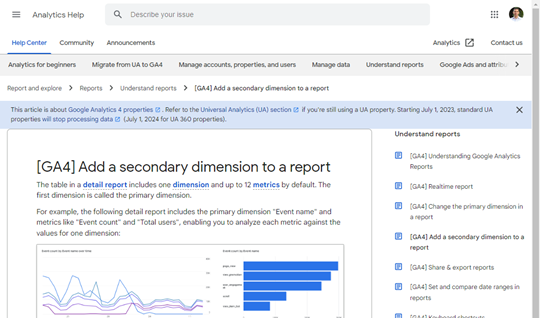Step-by-Step Overview: Leveraging Secondary Dimension in Google Analytics
Step-by-Step Overview: Leveraging Secondary Dimension in Google Analytics
Blog Article
Transform Your Analytics Approach With Second Measurement in Google Analytics
Discovering the possibility of secondary dimensions in Google Analytics opens up a world of opportunities for companies looking for to elevate their logical strategy. By integrating secondary measurements right into information analysis, a new layer of understandings arises, shedding light on complex user habits and interactions. This advanced level of analysis not just fine-tunes marketing methods yet additionally unwinds concealed opportunities for optimization and growth. The tactical application of second dimensions holds the crucial to unlocking a prize trove of indispensable info that can revolutionize exactly how businesses act and interpret upon their data.
Understanding Additional Measurements in Google Analytics
Additional dimensions in Google Analytics give added context to key information by permitting users to examine metrics across a second measurement, supplying much deeper insights right into user habits and interactions on an internet site. Secondary Dimension in Google Analytics. While key dimensions supply basic data factors such as pageviews, bounce rate, and session period, second measurements offer an even more in-depth view by segmenting the main data even more. This division permits individuals to analyze metrics in combination with one more measurement, such as website traffic resources, demographics, or customer behavior
Advantages of Making Use Of Secondary Dimensions
Making use of second measurements in Google Analytics supplies a tactical advantage by boosting the depth of evaluation and giving an extra detailed understanding of user interactions and habits on a site. By incorporating secondary dimensions, analysts can gain beneficial insights into the efficiency of specific sections or variables within their data. This makes it possible for an extra detailed examination of customer actions past surface-level metrics, enabling a deeper expedition of the factors influencing user interaction and conversions.

Just How to Carry Out Secondary Measurements
When integrating secondary measurements in Google Analytics, one vital step is to choose the relevant metrics and dimensions to enhance the analysis process. To implement secondary measurements successfully, beginning by accessing your Google Analytics account and browsing to the report you intend to enhance with added data. As soon as in the record, find the "Additional Dimension" switch, usually found over the information table. Clicking on this button will open up a drop-down menu listing numerous measurements that can be contributed to your primary measurement for much deeper understandings.
After selecting the ideal secondary measurement, such as 'Source/Medium' or 'Gadget Classification,' Google Analytics will certainly show the information in an extra in-depth format, permitting you to cross-analyze different elements of individual actions. Bear in mind to try out different combinations of key and second dimensions to reveal important patterns and patterns that can inform your advertising strategies. By implementing secondary dimensions thoughtfully, you can acquire an extra detailed understanding of your internet site or app performance and make data-driven decisions to enhance your digital presence.
Studying Data With Secondary Dimensions
Improve your data evaluation in Google Analytics by integrating secondary measurements to dive much deeper right into individual actions patterns and maximize your electronic marketing approaches effectively - Secondary Dimension in Google Analytics. By including additional measurements to your primary information, you can acquire valuable understandings that can assist you make informed choices concerning your website or application efficiency
Assessing information with second measurements permits you to segment your key information even more, giving an extra thorough sight of user communications. As an example, incorporating the main dimension of 'source/medium' with a second measurement like 'touchdown web page' can disclose which specific web pages are driving website traffic from different sources. This details can be crucial in fine-tuning your content approach or optimizing your marketing campaign to enhance conversions.
Furthermore, making use of secondary measurements enables you to determine correlations between different metrics, assisting you recognize the impact of various aspects on individual habits. Whether it's assessing demographics together with individual involvement metrics or device categories with conversion prices, secondary dimensions empower you to reveal concealed trends and patterns that can lead your advertising and marketing initiatives.
Maximizing Performance With Additional Measurements
To boost the performance of data evaluation and decision-making in Google Analytics, incorporating second measurements is key to enhancing efficiency metrics and gaining deeper insights i was reading this into individual habits patterns. By utilizing second measurements, analysts can dive past surface-level data and uncover beneficial connections that might otherwise go unnoticed. This optimization method allows businesses to tailor their advertising and marketing initiatives much more successfully, recognize areas for enhancement in web site functionality, and improve total customer experience.
Additional dimensions offer a more thorough view of user interactions by supplying additional context to main data metrics. Combining the key dimension of 'touchdown web page' with a second measurement like 'tool group' can disclose whether particular tools are much more likely to drive involvement on details touchdown pages. This insight can notify responsive style renovations or targeted advertising strategies to increase performance.

Conclusion
To conclude, the assimilation of secondary dimensions in Google Analytics offers services with an effective tool to improve their analytics method. Secondary Dimension in Google Analytics. By delving deeper right into user habits and interactions, marketing experts can uncover useful understandings that can drive performance optimization and improve the total customer experience. Leveraging secondary dimensions enables an extra comprehensive evaluation of information, causing even more enlightened decision-making and tailored advertising and marketing initiatives
Additional measurements in Google Analytics give added context to key information by permitting customers to assess metrics throughout a second measurement, providing deeper understandings right into customer habits and interactions on an internet site. While primary dimensions supply basic data factors such as pageviews, bounce price, and session duration, second dimensions use a more comprehensive sight by segmenting the key information better.One of the crucial advantages of making use of additional measurements is the capability to uncover connections and patterns that might check my reference not be quickly apparent when look at more info examining data with main measurements alone.When incorporating second dimensions in Google Analytics, one necessary action is to choose the appropriate metrics and dimensions to enhance the evaluation process. Combining the primary dimension of 'landing web page' with a second dimension like 'gadget group' can expose whether particular devices are extra likely to drive engagement on particular landing pages.
Report this page